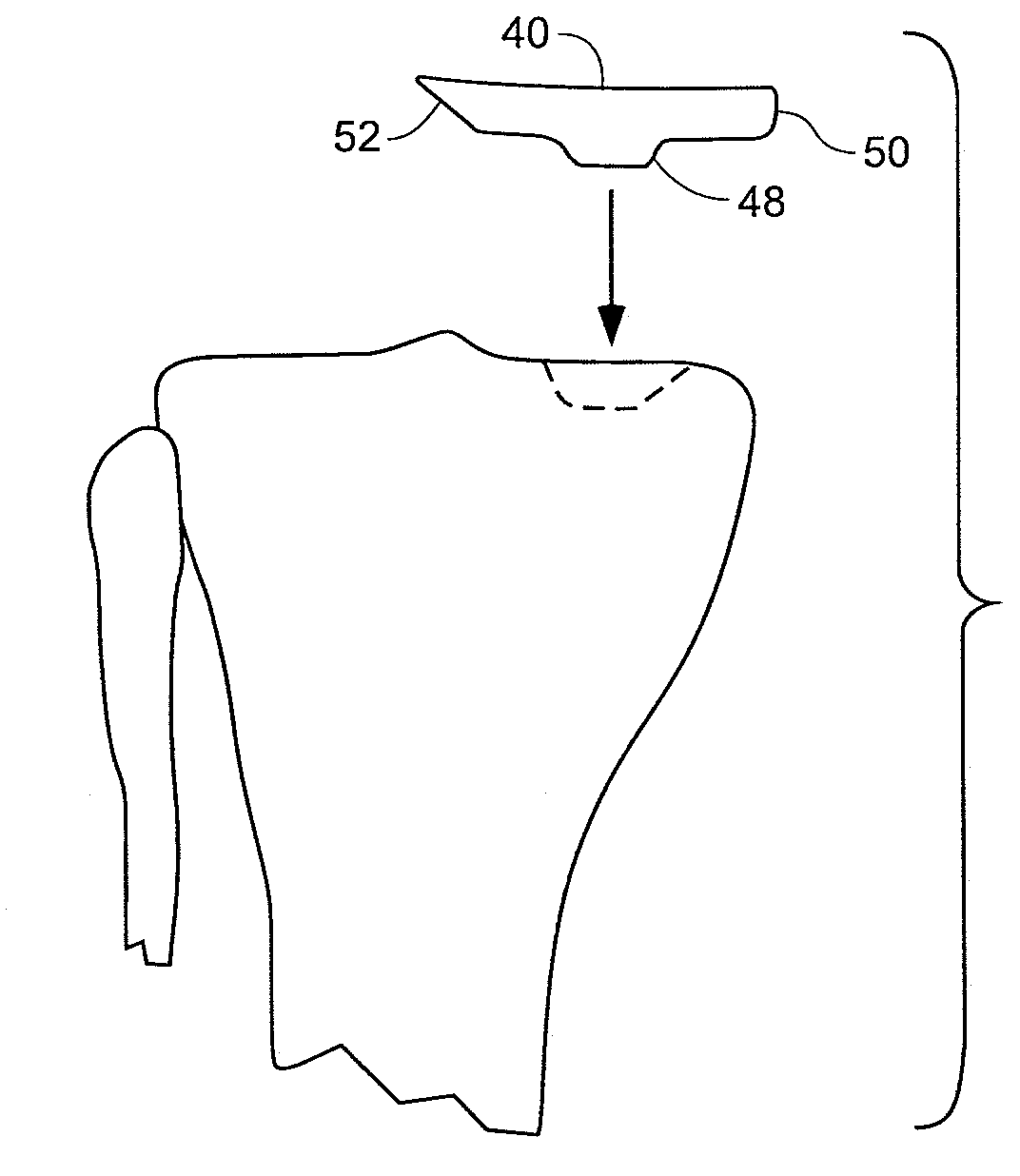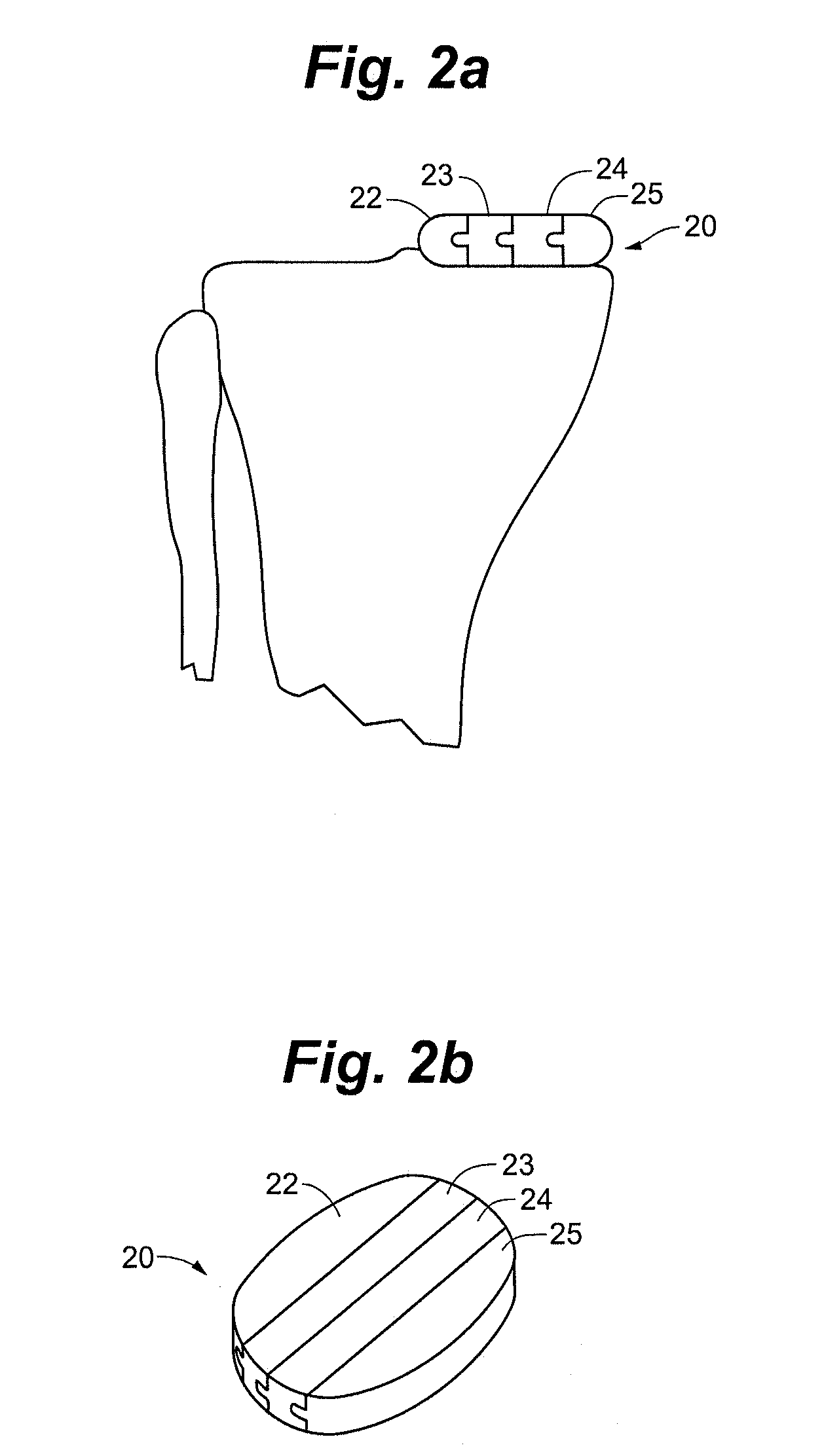Method and system for mammalian joint resurfacing
a technology of mammalian joints and resurfacing, applied in the field of biomaterials, can solve the problems of requiring a significant amount of intact cartilage and meniscus for the device of fell et al., and achieve the effects of reducing or avoiding potential problems, facilitating the preparation process, and facilitating the us
- Summary
- Abstract
- Description
- Claims
- Application Information
AI Technical Summary
Benefits of technology
Problems solved by technology
Method used
Image
Examples
Embodiment Construction
[0051]The method and system (e.g., preformed component(s) and / or curable biomaterial and mold) can be used to prepare a final prosthesis, in vivo, that provides a first major surface in apposition to and retained upon the supporting bone itself, and a second (generally substantially parallel and opposite) major surface adapted to provide a wear surface for opposing (e.g., articulating) bone. By “retained upon” it is meant that the final prosthesis is maintained in a desired position upon the supporting bone surface in a manner suitable for its intended use, e.g., by the use of one or more anchor points, by the use of adhesive or other suitable interface materials, by the use of sutures, staples, and the like, and / or by a mechanical lock achieved by the combination of a bone-contacting surface suitably conformed or conformable to the terrain of supporting bone, together with the retaining (and optionally including deforming) effect achieved upon repositioning opposing articulating bo...
PUM
 Login to View More
Login to View More Abstract
Description
Claims
Application Information
 Login to View More
Login to View More - R&D
- Intellectual Property
- Life Sciences
- Materials
- Tech Scout
- Unparalleled Data Quality
- Higher Quality Content
- 60% Fewer Hallucinations
Browse by: Latest US Patents, China's latest patents, Technical Efficacy Thesaurus, Application Domain, Technology Topic, Popular Technical Reports.
© 2025 PatSnap. All rights reserved.Legal|Privacy policy|Modern Slavery Act Transparency Statement|Sitemap|About US| Contact US: help@patsnap.com



